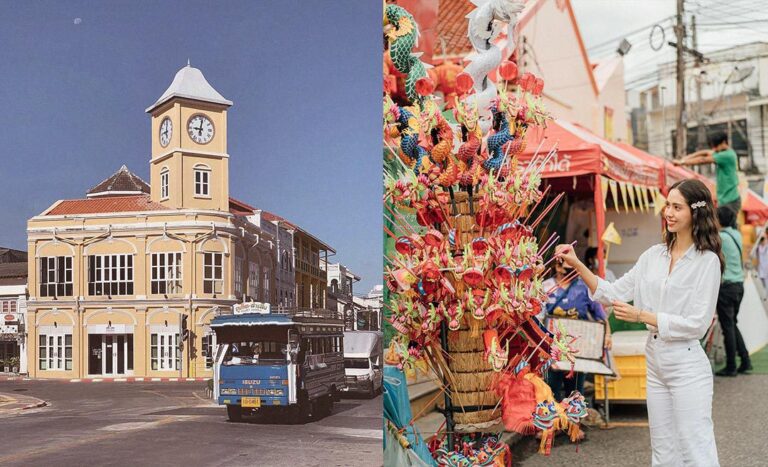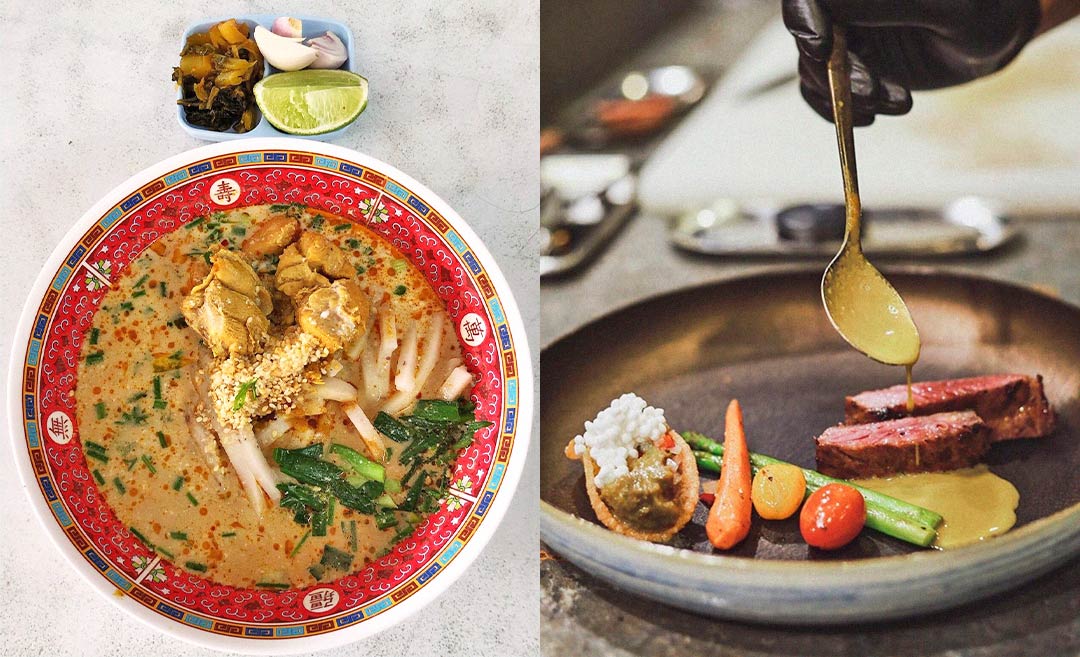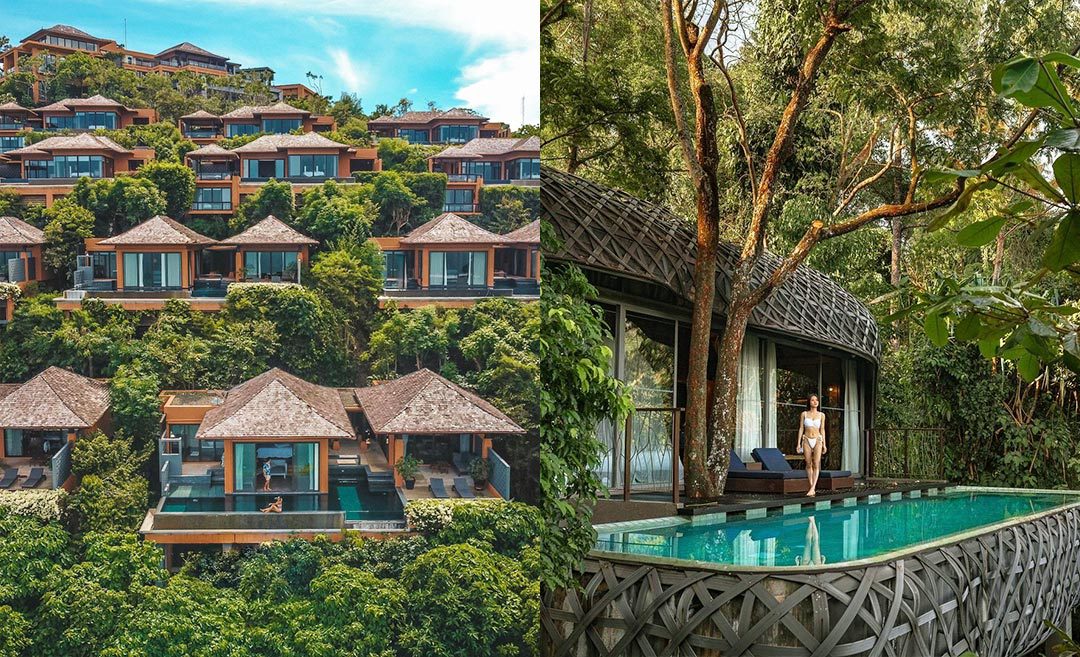The mention of Phuket often conjures up images of crystalline palm-fringed beaches and the pulsating nightlife of the island’s legendary Bangla Road.
While the shimmering Andaman Sea and glittering cabarets may be on everyone’s Phuket itinerary, the historic Old Town, once the island’s bustling commercial hub, is the place for heritage crawls and amazing eats, including some of the best breakfasts.
This quaint quarter, with its elegant Sino-Portuguese mansions, heirloom-decked boutique hotels, temples, markets, and museums, is a microcosm of Phuket’s vibrant cultural melange.
See and do
Soi Romanee
Formerly home to brothels and opium dens, Soi Romanee is a picturesque laneway lined with candy-coloured Sino-Portuguese shophouses sporting ornate embellishments. This one-time dubious alley is now a vibrant, mural-splashed walking street occupied by guesthouses, chic cafes, clothing stores, and stalls selling all manner of trinkets.
Here, you can pose for photos, pick up a unique souvenir, and savour indulgent treats like yuzu-flavoured oh aew (shaved ice dessert) at the popular Torry’s Ice Cream Boutique.
Chinpracha House
A beautifully preserved example of Sino-Portuguese architecture, this two-storey mansion at the edge of Old Town was built by tin tycoon Phra Pitak Chinpracha in 1903. Chinpracha’s descendants reside on the house’s cordoned-off top floor, while the rest of the five-bedroom mansion has been turned into a museum.
Spaces open to visitors include a dining hall, bedroom, kitchen, courtyard, and altar room, all decorated with period furniture and heirlooms that showcase the family’s Thai Peranakan or Phuket Baba heritage — a blend of Chinese and Thai influences. On display are intricately carved armoires, mother-of-pearl inlaid dark wood furniture, a huge metal safe, sepia-toned family portraits, and antique jewellery.
Museum Phuket
This museum in the centre of town is a repository of Phuket’s history, detailing its development into a prosperous settlement that flourished on tin mining riches. It consists of two parts –– Phuket Nagara, housed in the old police station with a clock tower, and across the road, the Peranakanitat Museum in the Chartered Bank building that’s over a century old.
Phuket Nagara traces the story of Phuket through four eras — forest, mining, town, and tourism. The last one being a glimpse into how the city went from a major tin production centre into a tourism powerhouse. Meanwhile, the Peranakanitat Museum offers insights into Phuket’s Thai Peranakan community, descended from the union of mainly Hokkien Chinese migrants and local women.
Also known as the Phuket Baba Museum, it features fun interactive displays on Thai Peranakan culture that include heirloom furniture, traditional food and altar offerings, clothing, jewellery, and accessories.
Pud Jor Shrine and Jui Tui Shrine
Located on Ranong Road, Pud Jor Shrine is Phuket’s oldest Chinese temple and is dedicated to Guanyin, the Goddess of Mercy. Established by the town’s early Chinese settlers, the temple is especially famed for its healing powers, and locals will pay a visit to pray for good health. Situated next to Pud Jor Shrine is another Old Town landmark — Jui Tui Shrine, an ornate temple that is the site of the annual Phuket Vegetarian Festival held in September or October.
Also known as the Nine Emperor Gods Festival, this nine-day festival sees devotees abstain from meat, alcohol, and other stimulants, with some piercing their bodies in the belief that it purifies them. The temple’s main deity is Tean Hu Huan Soy, often regarded by Taoists as the patron god of dancers and the performing arts.
Phuket Philatelic Museum
You don’t have to be a stamp collector to appreciate the exhibits at Phuket Philatelic Museum, a butterscotch edifice that once served as the island’s post and telegraph office. Exhibits include an informative display on the evolution of Thailand’s postal service and a replica post office replete with rotary phones, telegraph machines, a vintage post box, and a mail delivery bicycle.
The highlight of this compact museum, however, is its stamp collection which, among others, features Thailand’s first postage stamp issued in 1883 and a golden stamp commemorating the 60th anniversary of King Bhumibol Adulyadej’s accession to the throne.
Eat
The Charm Dining Gallery
Opened in 2018, this eatery serves Phuket Baba flavours and southern Thai standards in a homey setting decorated with vintage furniture. Menu highlights include chicken curry with potatoes — a creamy, coconut milk-enriched curry best enjoyed with crispy roti or fresh bread — and pineapple and fish sour soup, a spicy-sour fish curry with pineapple chunks.
The restaurant is a recipient of the Michelin Bib Gourmand Award, which recognises eateries dishing up delicious meals at affordable prices.
One Chun Cafe & Restaurant
Set in a charming shophouse and adorned with vintage finds like old clocks and photos, this cosy and fuss-free family-style dining room bursts with retro charm. Consistently rated as one of the best restaurants in Phuket, One Chun stays true to authentic Phuket cuisine, with tasty recreations of recipes handed down over three generations.
The irresistible fare includes moo hong — melt-in-your-mouth pork belly braised in a dark soya sauce gravy — and a Phuket staple, khanom chin (fermented rice noodles), served with an indulgent crab curry.
Blue Elephant Cooking School and Restaurant Phuket
There’s no better place to learn the intricacies of Thai cuisine than at the Blue Elephant Cooking School and Restaurant. The Phuket outpost of the Bangkok-based cooking school and restaurant is housed in the Sino-Portuguese Governor’s Mansion neighbouring Baan Chinpracha.
There are twice-daily cooking classes where participants whip up four-course meals under the supervision of experienced chefs, as well as a restaurant that serves an extensive menu of Thai dishes and a bar.
Stay
The Memory at On On Hotel
In contrast to the sprawling resorts along the Phuket coastline, Old Town has a higher concentration of boutique hotels, many of which are located in restored heritage buildings. One such property is The Memory at On On Hotel, with superior, deluxe, and junior suite options painted in bold hues like royal blue and decorated with antiques.
This mid-range option is recommended for its strategic location — within walking distance of attractions like Soi Romanee and the Hokkien Chinese Shrine of the Serene Light.
Book your stay at The Memory at On On Hotel here.
Woo Gallery & Boutique Hotel
This former watch retail and repair store is now a delightful boutique hotel run by the original owner’s grandson and his wife. The couple restored the shophouse, which is more than a century old, and furnished it with antiques — some from the family’s collection and others purchased — before opening it to paying guests.
Featuring Chinese-inspired decorative touches that honour the building’s earlier residents, rooms range from the compact but cute 25-square metre Classic for singles or couples to the bright and airy Heritage Twin, a larger space that can accommodate four.
Book your stay at Woo Gallery & Boutique Hotel here.
Courtyard by Marriott Phuket Town
Just a stone’s throw from Phuket Philatelic Museum, this mid-priced Marriott property is among Old Town’s more upscale sleeps. Here, rooms and suites are contemporarily decorated with subtle nods to Thai heritage and a soothing neutral colour palette.
Krua Talad Yai, the hotel’s signature restaurant, serves up solid southern Thai specialities alongside international favourites. Other diversions include a 24-hour fitness centre, pool, and bar.
Book your stay at Courtyard by Marriott Phuket Town here.
This story by Chitra Santhinathan was originally published on AirAsia. Zafigo republished this story in full with permission from the publisher, simply because good stories should be read by as many people as possible! If you have stories that will be of interest and useful to women travellers, especially in Asia, please get in touch with us at [email protected].



